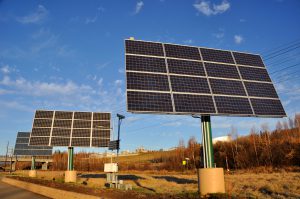
The future looks greener. And for investors, the microgrid market from 2023-2028 will be very green indeed. The global microgrid market was about $28,781.63 million USD in 2021. It is anticipated to reach $63,365.02 million USD by 2028. It’s likely 2023 may be a pivotal year for construction industry microgrid development.
As microgrid development becomes more mainstream, the construction industry will be challenged to keep pace.
S&C Electric’s Stephanie Pine says, “One major change we should expect is a sweeping transition from basic to advanced microgrids. We have seen a large portion of initial microgrid deployments fall into the basic microgrid definition, where they primarily serve as standby generation with the capability to island from the main grid.”
In December 2022, the first Californian microgrid community was launched. Neighborhood homes will have grid backup capabilities as well as standalone capabilities.
Standardizations for microgrid deployments will continue to be developed. One construction industry concern is whether basic microgrid developments will be required to be upgraded as standardizations change.
“We have already accepted a microgrid controls standard, IEEE 2030.7-2017, and other standards related to microgrids also are being developed,” says Pine. “Systemic microgrid standardization is the next logical step.”
Benefits of microgrid communities are:
- Convenient app-based monitoring – Real-time monitoring and control allows homeowners to track their energy usage. They can customize home energy functions to work with their lifestyles.
- EPA, DOE certifications – Property owners will appreciate safety and performance guarantees from trusted sources. Energy-smart homes will be certified as DOE-designated Zero Energy-Ready Homes (ZERHs) and Environmental Protection Agency (EPA) ENERGY STAR® sanctioned.
- EV chargers standard – Homes will be smart-charger ready.
- Protection – Homeowners can switch to battery energy during an outage by disconnecting from the grid. Essential home functions will continue to operate uninterrupted.
- Reduced carbon footprint – Microgrid homes promote environmental conservation.
- Reduced energy usage – Homeowners can lower energy use by 40%.
Construction Monitor provides marketing datasorts from construction industry building permit information on a need-to-know basis. You decide what you need to know and when. Whether you’re an investor, developer, or contractor, a subscription can be the starting point for better business development and profits.
